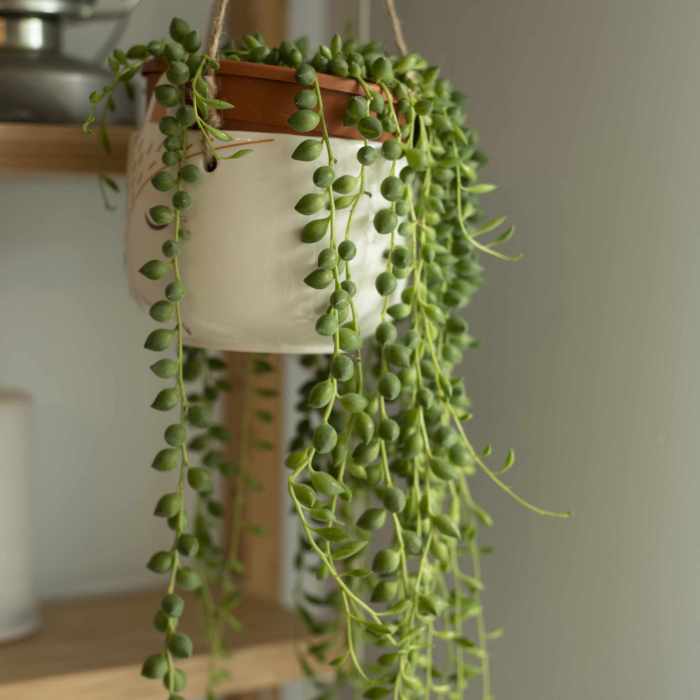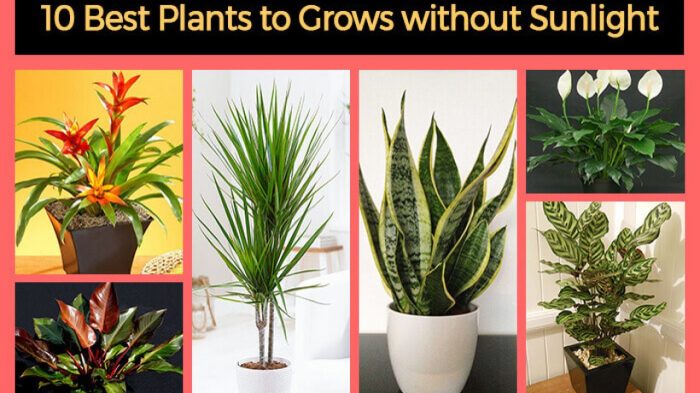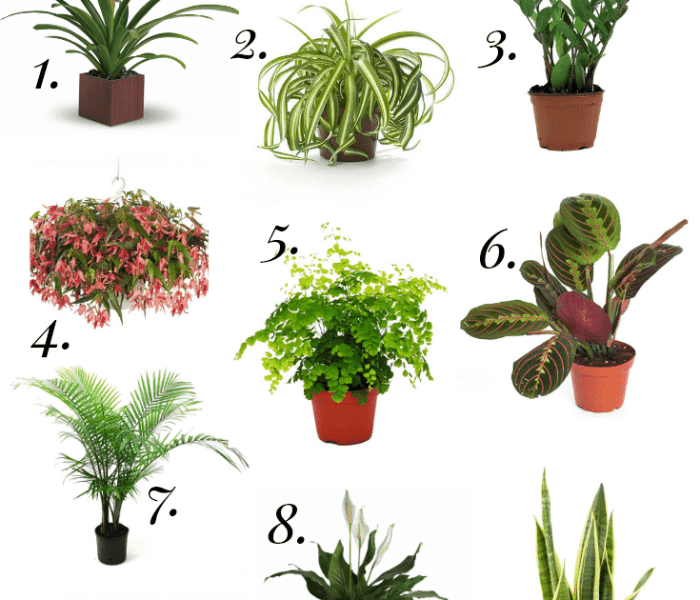Best plants for little sunlight – When natural light is scarce, indoor spaces can often feel gloomy and uninviting. However, there is a wide array of plants that thrive in low-light conditions, offering a solution to brighten up any room. These low-light tolerant plants not only add aesthetic appeal but also provide numerous benefits for indoor environments.
From the delicate beauty of ferns to the bold foliage of snake plants, this guide explores the best plants for little sunlight, providing expert tips on their care and maintenance. Whether you’re a seasoned plant enthusiast or just starting your indoor gardening journey, this comprehensive resource will help you create a thriving indoor oasis.
Best Plants for Low Light Conditions
Many indoor spaces, such as hallways, offices, and rooms with north-facing windows, receive minimal sunlight. Fortunately, there are numerous plant species that thrive in these low-light conditions.
Characteristics of Low-Light Tolerant Plants
- Darker green leaves: Low-light plants often have more chlorophyll to capture available light.
- Thin, flexible leaves: This allows plants to absorb more light with a larger surface area.
- Slow growth rate: These plants have adapted to conserve energy in low-light environments.
Examples of Low-Light Tolerant Plants
- Snake Plant (Sansevieria trifasciata) : Known for its upright, sword-like leaves and drought tolerance.
- ZZ Plant (Zamioculcas zamiifolia) : A low-maintenance plant with glossy, dark green leaves that can tolerate extreme neglect.
- Peace Lily (Spathiphyllum wallisii) : Produces white, lily-like flowers even in low light and prefers moist soil.
- Pothos (Epipremnum aureum) : A fast-growing vine with heart-shaped leaves that comes in various colors and patterns.
- Aspidistra (Aspidistra elatior) : Also known as the cast iron plant due to its extreme durability and ability to tolerate low light, drought, and neglect.
Benefits of Low-Light Plants in Indoor Spaces
- Improve air quality: Plants absorb pollutants and release oxygen.
- Reduce stress and anxiety: Studies have shown that indoor plants can have a calming effect.
- Add color and life to dark corners: Low-light plants can brighten up spaces with minimal natural light.
Plant Care for Low Light Conditions

Cultivating plants in low light environments requires meticulous care to ensure optimal growth and well-being. Understanding the specific needs of low-light plants is crucial for their success.
Watering
Low-light plants typically require less frequent watering than their high-light counterparts. Overwatering can lead to root rot, so it’s essential to allow the soil to dry out slightly between waterings. Check the soil moisture by inserting your finger about an inch into the soil.
If it feels dry, water the plant thoroughly. Avoid using cold water, as this can shock the roots.
Fertilizing
Low-light plants require less fertilizer than plants grown in brighter conditions. Fertilize sparingly during the growing season, using a balanced liquid fertilizer diluted to half strength. Avoid overfertilizing, as this can damage the roots.
For those with limited natural light, finding the right plants can be a challenge. Fortunately, there are many low-light-tolerant plants available. Some of these, like ferns and mosses, are also ideal for vivariums, which are enclosed ecosystems that house small animals.
To learn more about the best plants for vivariums, click here . Once you’ve chosen the perfect plants for your vivarium, you can enjoy the beauty of nature even in low-light conditions.
Repotting
Repot low-light plants when they become rootbound. Choose a pot that is only slightly larger than the current one, and use a well-draining potting mix specifically designed for low-light plants.
Temperature and Humidity
Most low-light plants prefer warm temperatures between 65 and 75 degrees Fahrenheit. They also appreciate higher humidity levels, which can be achieved by misting the leaves regularly or using a humidifier.
Soil Requirements
Low-light plants prefer well-draining soil that is rich in organic matter. Avoid using heavy, compacted soils, as these can lead to root rot. A potting mix specifically designed for low-light plants is ideal.
Common Problems
Low-light plants can be susceptible to certain problems, including:
- Yellowing leaves:This can indicate overwatering, lack of light, or nutrient deficiency.
- Drooping leaves:This can indicate underwatering or low humidity.
- Root rot:This is caused by overwatering and can be fatal to the plant.
By addressing these common problems promptly, you can help your low-light plants thrive.
For those with limited natural light, consider plants that thrive in low-light conditions. Some popular choices include ZZ plants, snake plants, and pothos. If you’re looking to add some greenery to your garden borders, best plants for border such as hostas, astilbes, and ferns are excellent options.
These shade-tolerant plants can brighten up even the darkest corners of your yard. Returning to indoor plants, peace lilies and Chinese evergreens are also great choices for low-light areas, adding a touch of elegance to any room.
Designing with Low-Light Plants: Best Plants For Little Sunlight

Creating visually appealing indoor spaces with low-light plants requires careful planning and thoughtful design. By understanding the unique characteristics and requirements of these plants, you can transform even the darkest corners of your home into vibrant and inviting oases.Incorporating low-light plants into different room designs can add a touch of nature and tranquility.
In living rooms, consider placing them on side tables, bookshelves, or windowsills that receive indirect light. In bedrooms, they can create a calming ambiance on nightstands or dressers. For kitchens, low-light plants can bring a touch of greenery to countertops or windowsills above the sink.While
natural light is essential for plant growth, artificial lighting can be a valuable supplement for low-light plants. Choose LED or fluorescent grow lights that emit the full spectrum of light needed for photosynthesis. Place these lights close to the plants, but not so close as to burn their leaves.
Specific Plant Recommendations

When choosing plants for low-light conditions, it’s essential to consider the specific light requirements of each species. Here’s a table summarizing some popular low-light plants, their scientific and common names, and care tips:
Table: Specific Plant Recommendations for Low-Light Conditions
| Scientific Name | Common Name | Light Requirements | Care Tips |
|---|---|---|---|
| Aspidistra elatior | Cast Iron Plant | Very low light to full shade | Tolerates neglect and infrequent watering |
| Sansevieria trifasciata | Snake Plant | Low light to bright indirect light | Water sparingly, allowing soil to dry out between waterings |
| Epipremnum aureum | Pothos | Low light to bright indirect light | Water when soil feels dry to the touch |
| Zamioculcas zamiifolia | ZZ Plant | Very low light to bright indirect light | Water very sparingly, allowing soil to dry out completely between waterings |
Additional Considerations

Role of Light Intensity and Duration in Plant Growth, Best plants for little sunlight
Light intensity and duration play crucial roles in plant growth. Intensity refers to the amount of light reaching the plant, while duration is the length of time the plant is exposed to light. Both factors influence photosynthesis, the process by which plants convert light energy into chemical energy.
For those seeking to brighten up dimly lit spaces, selecting the right plants is crucial. Among the top choices for low-light environments are the snake plant and ZZ plant. Beyond their aesthetic appeal, plants can also enhance the energy flow in a home according to feng shui principles.
For those interested in incorporating feng shui into their plant choices, consider incorporating plants that symbolize prosperity and good fortune, such as the money tree and jade plant. Best plants feng shui can complement the benefits of low-light tolerant plants, creating a harmonious and visually appealing space.
High light intensity promotes rapid growth, but can also lead to stress and damage if the duration is too long. Low light intensity slows growth, but can be tolerated for longer periods. The optimal combination of light intensity and duration varies depending on the plant species.
Measuring Light Levels
Measuring light levels accurately is essential for assessing the suitability of a space for low-light plants. Light meters or smartphone apps can be used for this purpose.
Light meters provide precise readings in foot-candles (fc) or lux. Apps estimate light levels using the device’s camera and ambient light sensor, providing a less precise but convenient alternative.
Maximizing Natural Light in Indoor Spaces
Maximizing natural light in indoor spaces is crucial for low-light plants. Here are some tips:
- Place plants near windows or skylights.
- Use sheer curtains or blinds to filter light without blocking it.
- Avoid placing furniture or other objects that obstruct light.
- Use reflective surfaces, such as mirrors or white walls, to bounce light around the room.
- Consider using grow lights as a supplement to natural light.
Closing Notes
Incorporating low-light plants into your indoor spaces not only enhances their aesthetic appeal but also promotes well-being. These resilient plants can thrive in even the most challenging lighting conditions, making them an ideal choice for homes, offices, and other indoor environments.
By understanding their specific needs and providing proper care, you can enjoy the beauty and benefits of these plants for years to come.
Helpful Answers
How do I know if my plant is getting enough light?
Observe your plant’s growth and appearance. If it’s not growing or has yellowing leaves, it may not be getting enough light.
Can I use artificial light to supplement natural light?
Yes, artificial lighting can be used to provide additional light for low-light plants. Choose bulbs that emit bright, indirect light.
How often should I water my low-light plants?
Water your low-light plants less frequently than you would plants in brighter conditions. Allow the soil to dry out slightly between waterings.